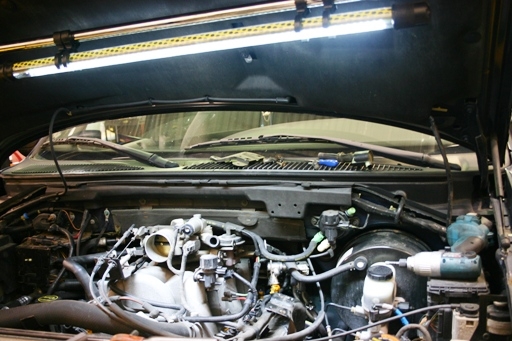Automotive Stripped Threads – Avoid & Repair
March 20, 2011 9:16 am TIME-SERT KitsAutomotive Stripped Threads – Avoid Stripping and Cross Threading – Repair
© DenLorsTools.com Summary: Suggestions from an ASE Master Auto Tech with over 25 years in the car repair business on how to prevent and repair stripped threads. Anyone who works on cars long enough will eventually come across a seized/stripped bolt or spark plug. Besides explaining to the customer that it wasn’t the mechanic’s fault, the next obstacle is to do the repair as inexpensively as possible.
Heli-Coil always comes to mind when in this type of jam. In many cases the HeliCoil brand works just fine. Other times not so much. If logically thinking about the best repair for stripped threads, anyone should consider what the repair insert is made of. The Heli-Coil is a thin wire coil as its name implies. On the other hand, the TIME-SERT brand is a much more substantial piece of metal. It is NOT just a skinny wound piece of wire. The TIME-SERT thread insert is a machined bushing which instills much more confidence for any thread repair job.
How to Avoid Stripped Threads When Removing
When removing a bolt or spark plug and it feels stuck, it’s best to spray some WD40 or some other brand of penetrating oil like PB Blaster for instance. Spray the lubricant and work the bolt or spark plug back and forth slightly. Forcing it will result with a broken bolt or spark plug. Moving it slowly back and forth will provide the best chance of saving the threads. While working it left and right and increasing the amount of turning slightly, the threads are slowly cleaned. In the best case scenario most of the threads will be left in tact and no repair insert will be necessary. Sometimes dislike metals will seize and there’s not much you can do. I remember a Mazda 4 cylinder car years ago that had a single spark plug securely seized. It was decision time… remove it forcefully and deal with the threads or inform the customer and leave it ALONE!
How to Avoid Stripped Threads During Installation
It’s always best to start bolts and spark plugs by HAND. This helps to prevent the dreaded cross threading! One example: If brackets are being bolted to an engine block it’s best to start all the bolts first before tightening any of them. Start the bolts all by hand first and wiggle the bracket slightly to help avoid cross threading them. Next, it’s obvious but I have to say it. “DON’T OVERTIGHTEN” Many technicians with years of experience can FEEL how tight to run bolts and spark plugs down. Some bolts have much more critical torque specs. With aluminum being used much more in cars today, this is particularly true. One of the most stressful things that can happen when putting a motor back together is to feel a bolt strip on the FINAL torque! TTY (Torque to Yield) bolts are even more tricky. These bolts are meant to stretch during the tightening sequence. A simple torque wrench is not enough to deal with these bolts. Typically, an initial torque in a certain pattern is required by the service procedure outlined by the car manufacturer. After the initial torque, the bolts are turned a certain DEGREE, instead of torque.
Plan “B”
If all the precautions have been taken and threads are damaged anyways, there’s still plan B. Find the correct TIME-SERT insert that in many cases will be stronger than the original threads. TIME-SERT makes standard thread kits, metric ones and some very specific kits for head-bolts, spark plugs and drain plugs. A common failure on GM 3.4 engines for example can be repaired with one of the metric kits. The best thing to do is to determine the thread pitch, bolt size and diameter. Chances are there’s a TIME-SERT kit that will save the day!
Related Auto Repair Articles and Tools
TIME-SERT Thread Kits for Sale
TTY Head Bolts Tech Article Torque Wrench with Electronic Angle
